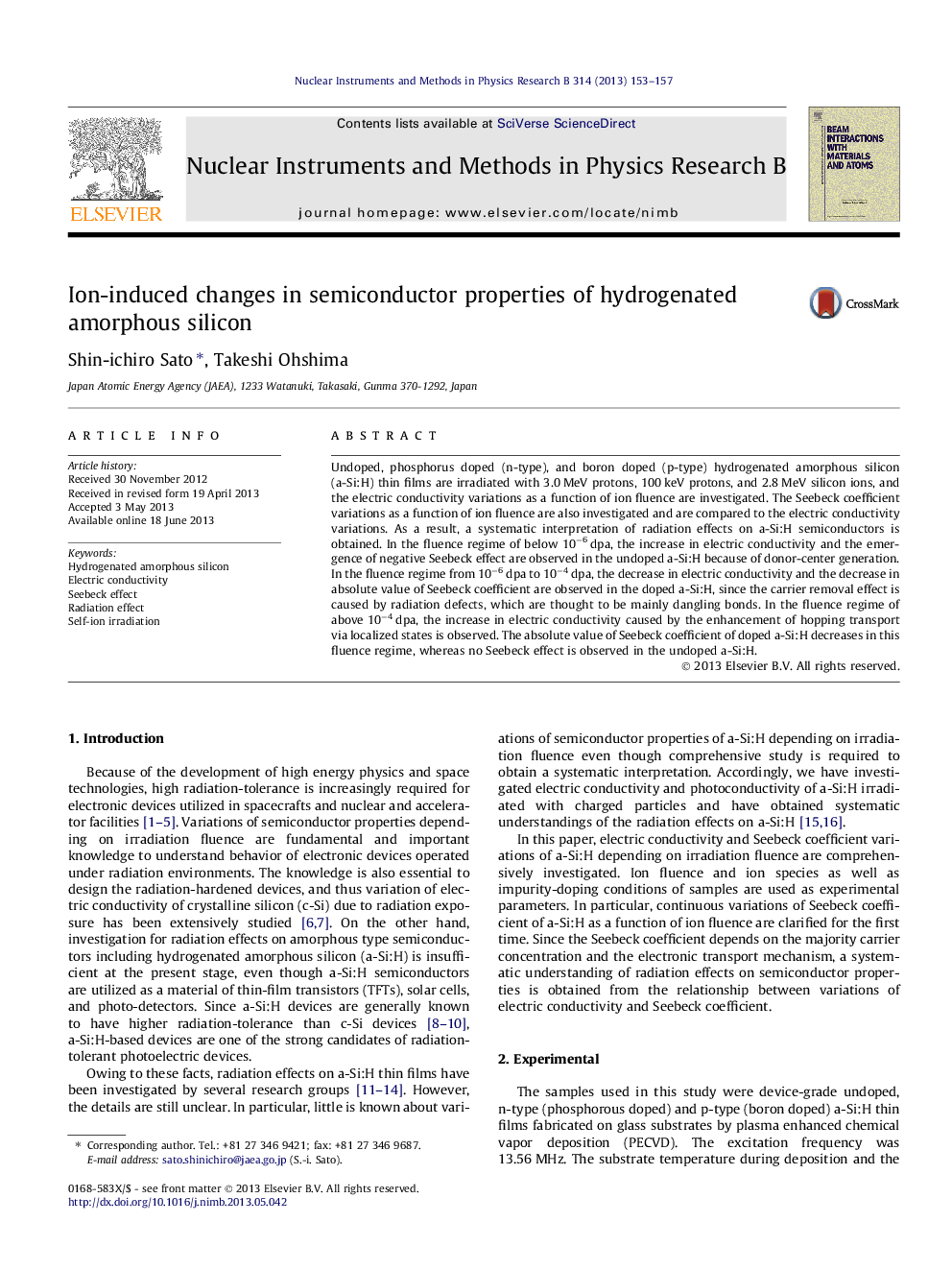| Article ID | Journal | Published Year | Pages | File Type |
|---|---|---|---|---|
| 1683812 | Nuclear Instruments and Methods in Physics Research Section B: Beam Interactions with Materials and Atoms | 2013 | 5 Pages |
Abstract
Undoped, phosphorus doped (n-type), and boron doped (p-type) hydrogenated amorphous silicon (a-Si:H) thin films are irradiated with 3.0Â MeV protons, 100Â keV protons, and 2.8Â MeV silicon ions, and the electric conductivity variations as a function of ion fluence are investigated. The Seebeck coefficient variations as a function of ion fluence are also investigated and are compared to the electric conductivity variations. As a result, a systematic interpretation of radiation effects on a-Si:H semiconductors is obtained. In the fluence regime of below 10â6Â dpa, the increase in electric conductivity and the emergence of negative Seebeck effect are observed in the undoped a-Si:H because of donor-center generation. In the fluence regime from 10â6Â dpa to 10â4Â dpa, the decrease in electric conductivity and the decrease in absolute value of Seebeck coefficient are observed in the doped a-Si:H, since the carrier removal effect is caused by radiation defects, which are thought to be mainly dangling bonds. In the fluence regime of above 10â4Â dpa, the increase in electric conductivity caused by the enhancement of hopping transport via localized states is observed. The absolute value of Seebeck coefficient of doped a-Si:H decreases in this fluence regime, whereas no Seebeck effect is observed in the undoped a-Si:H.
Keywords
Related Topics
Physical Sciences and Engineering
Materials Science
Surfaces, Coatings and Films
Authors
Shin-ichiro Sato, Takeshi Ohshima,
